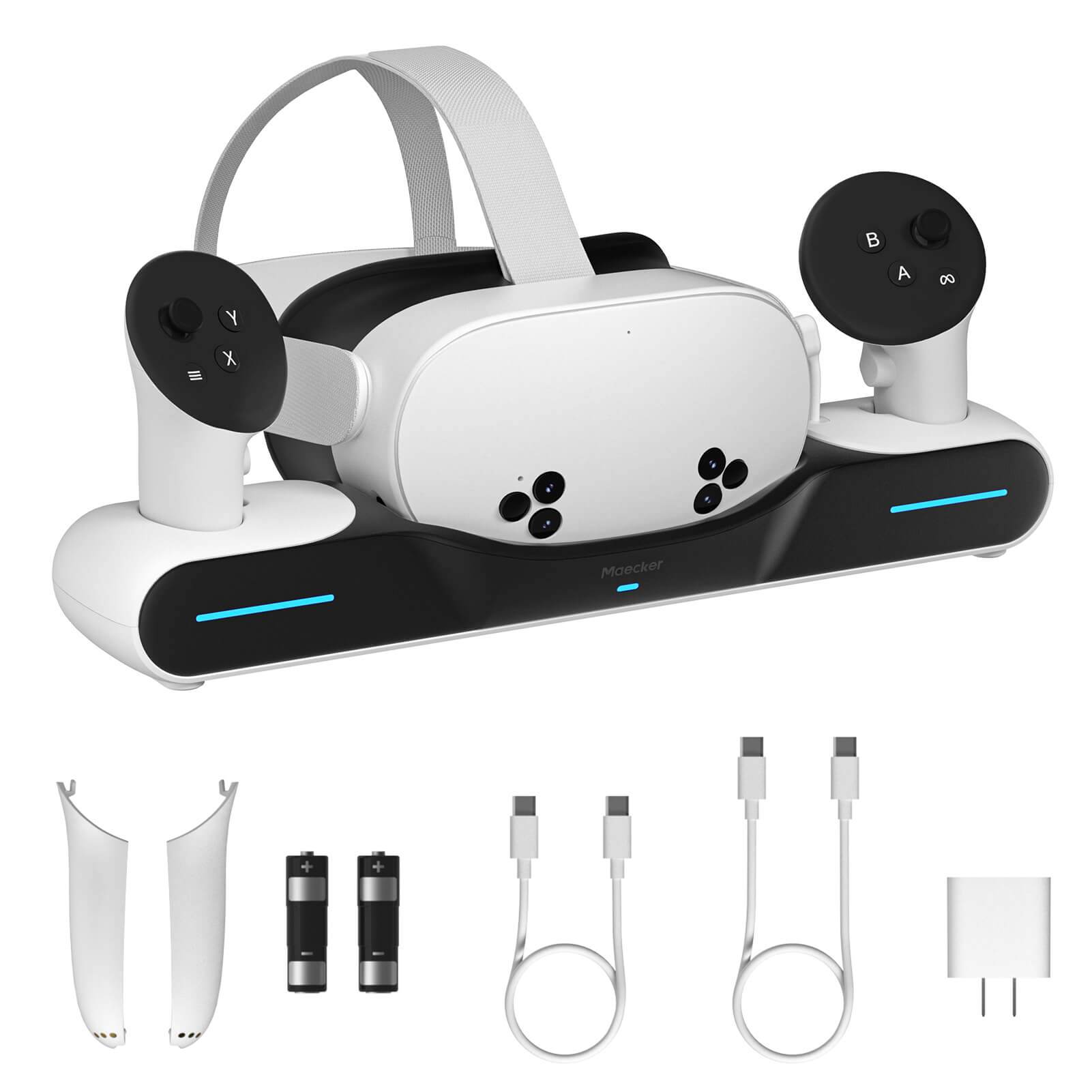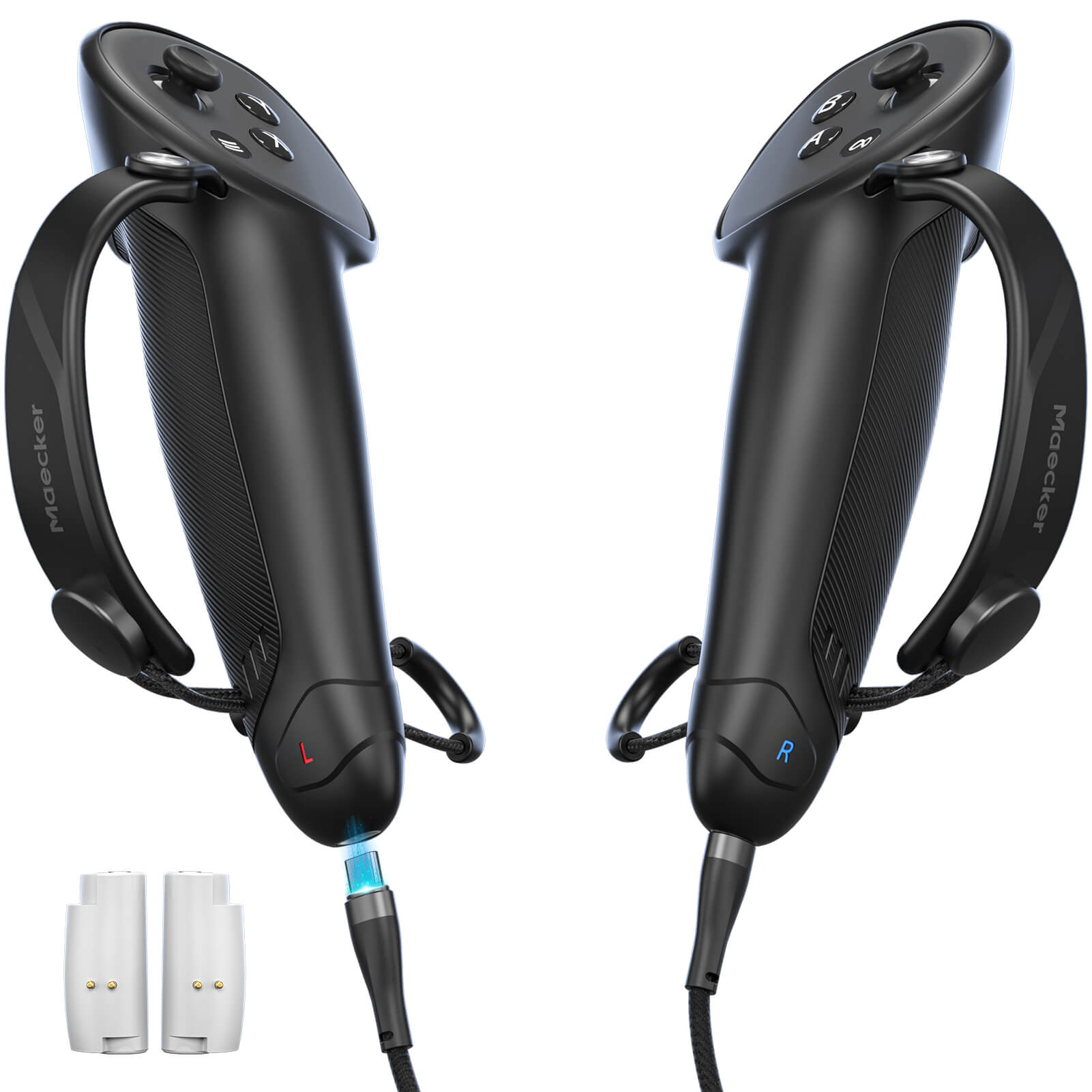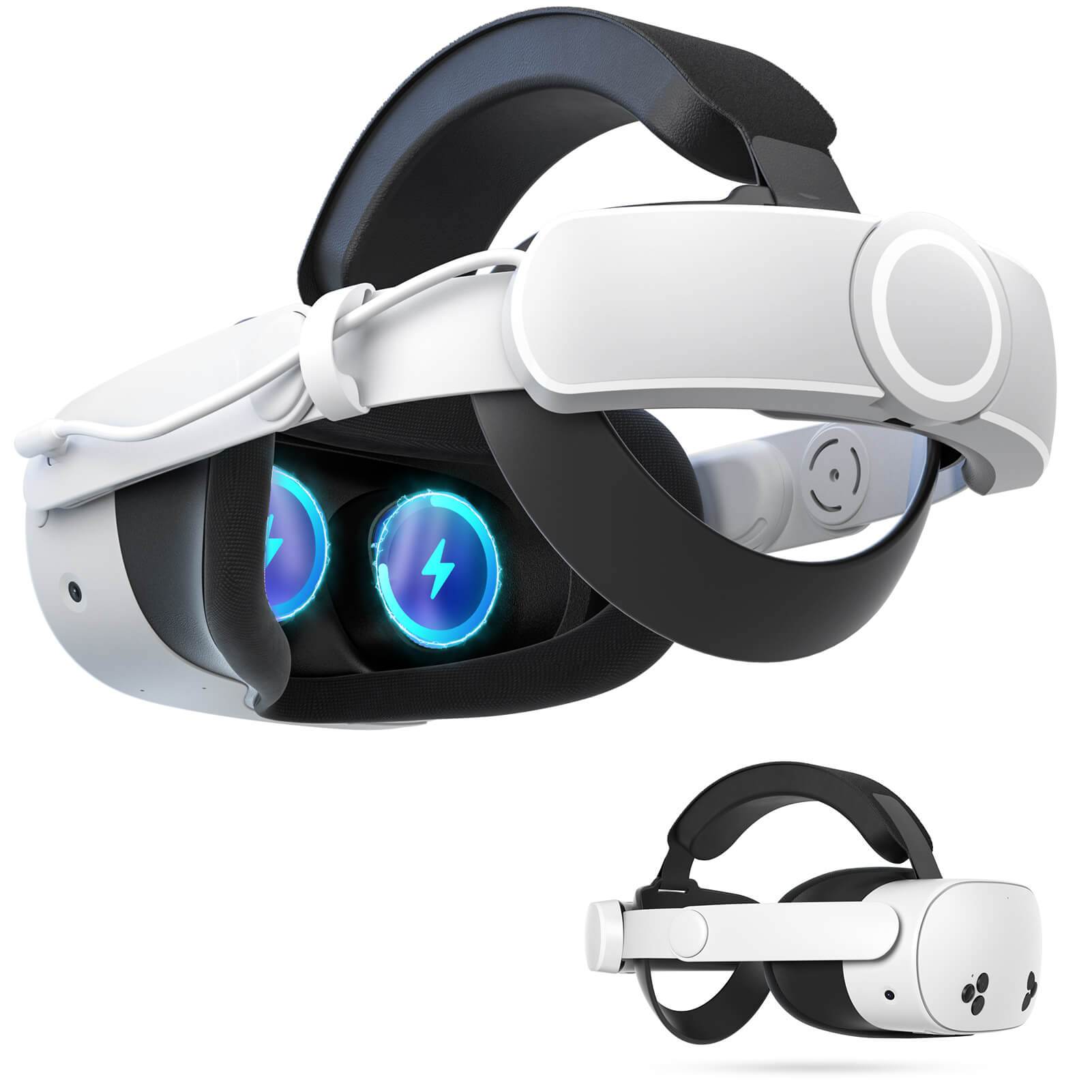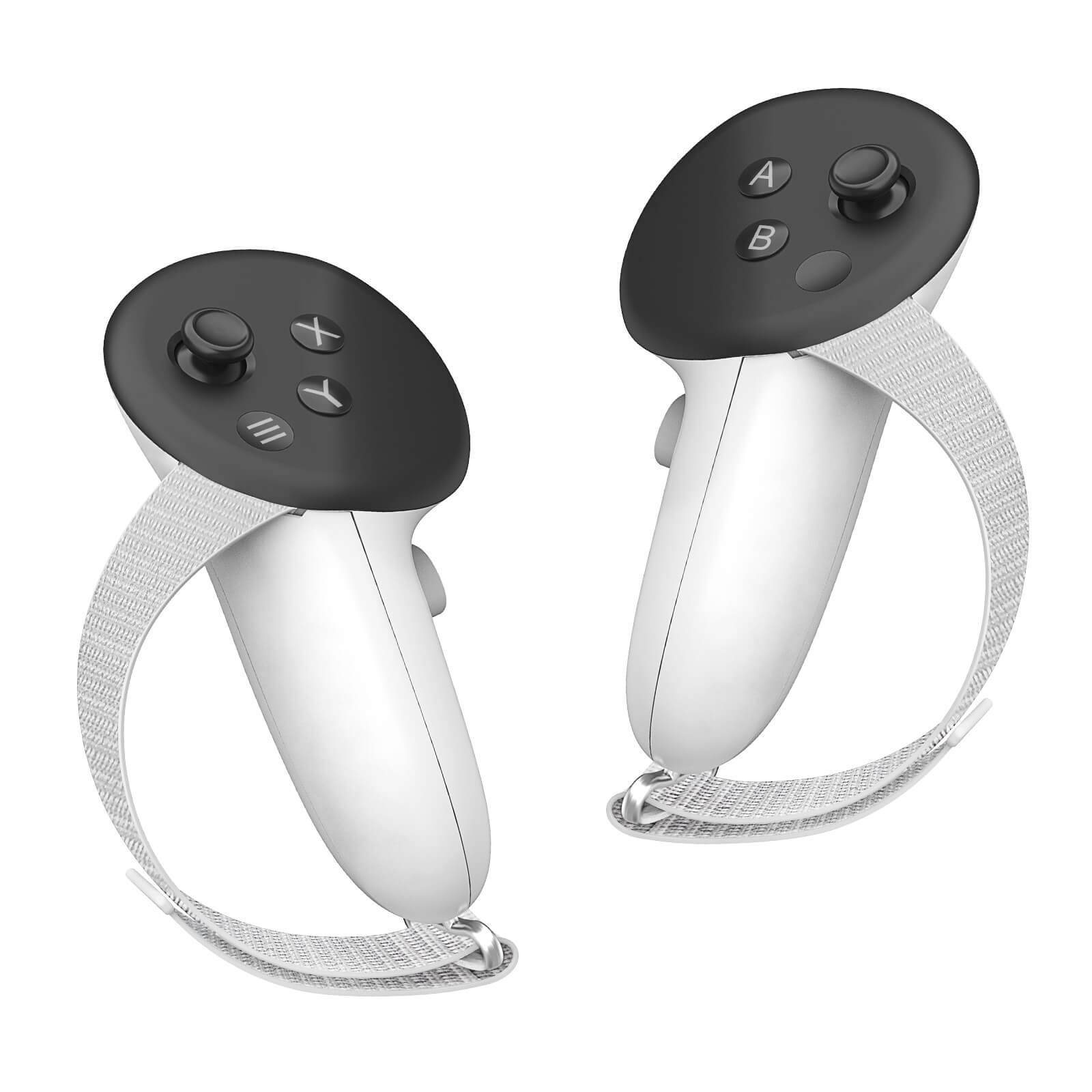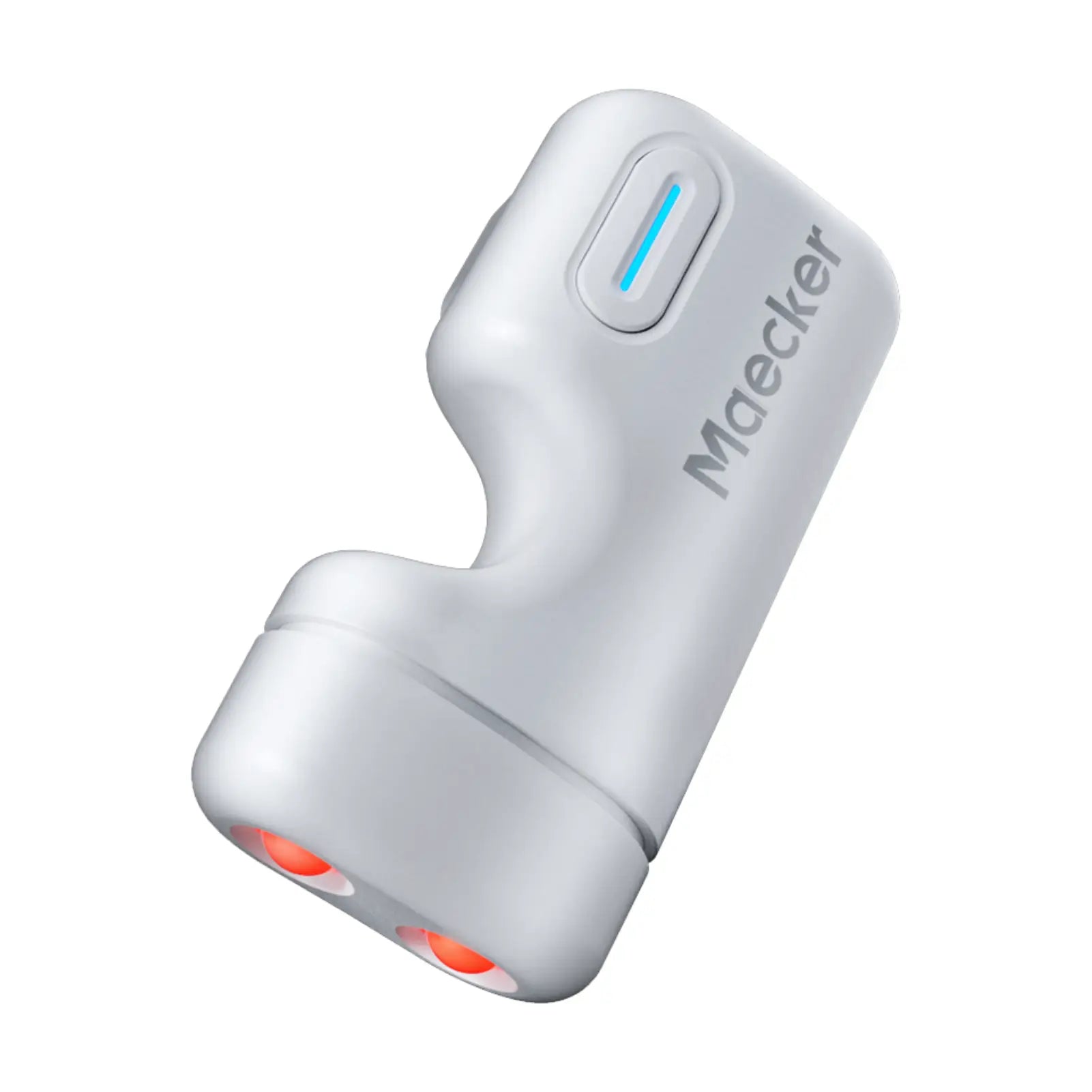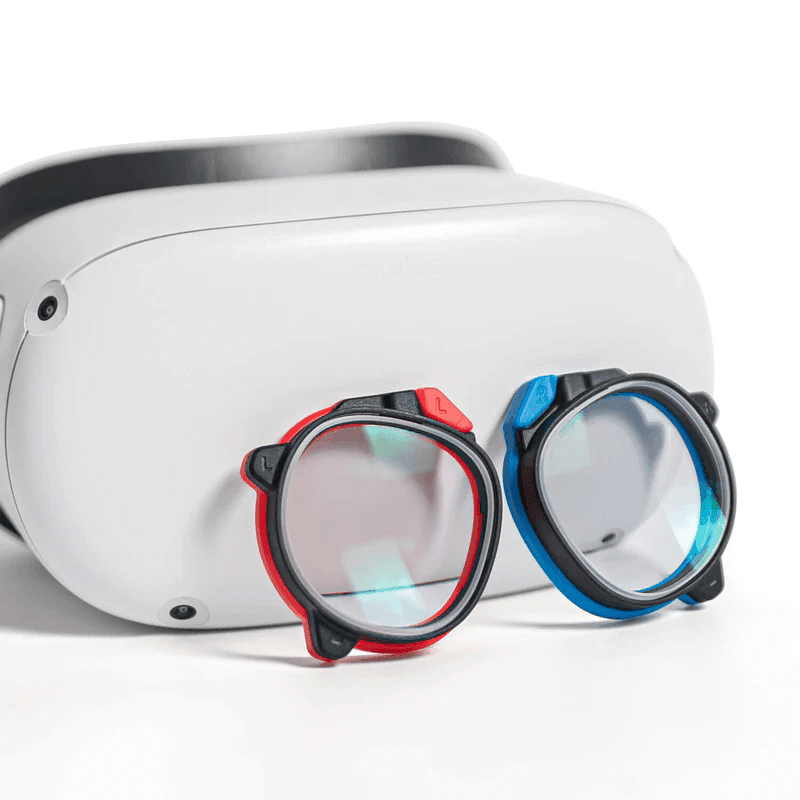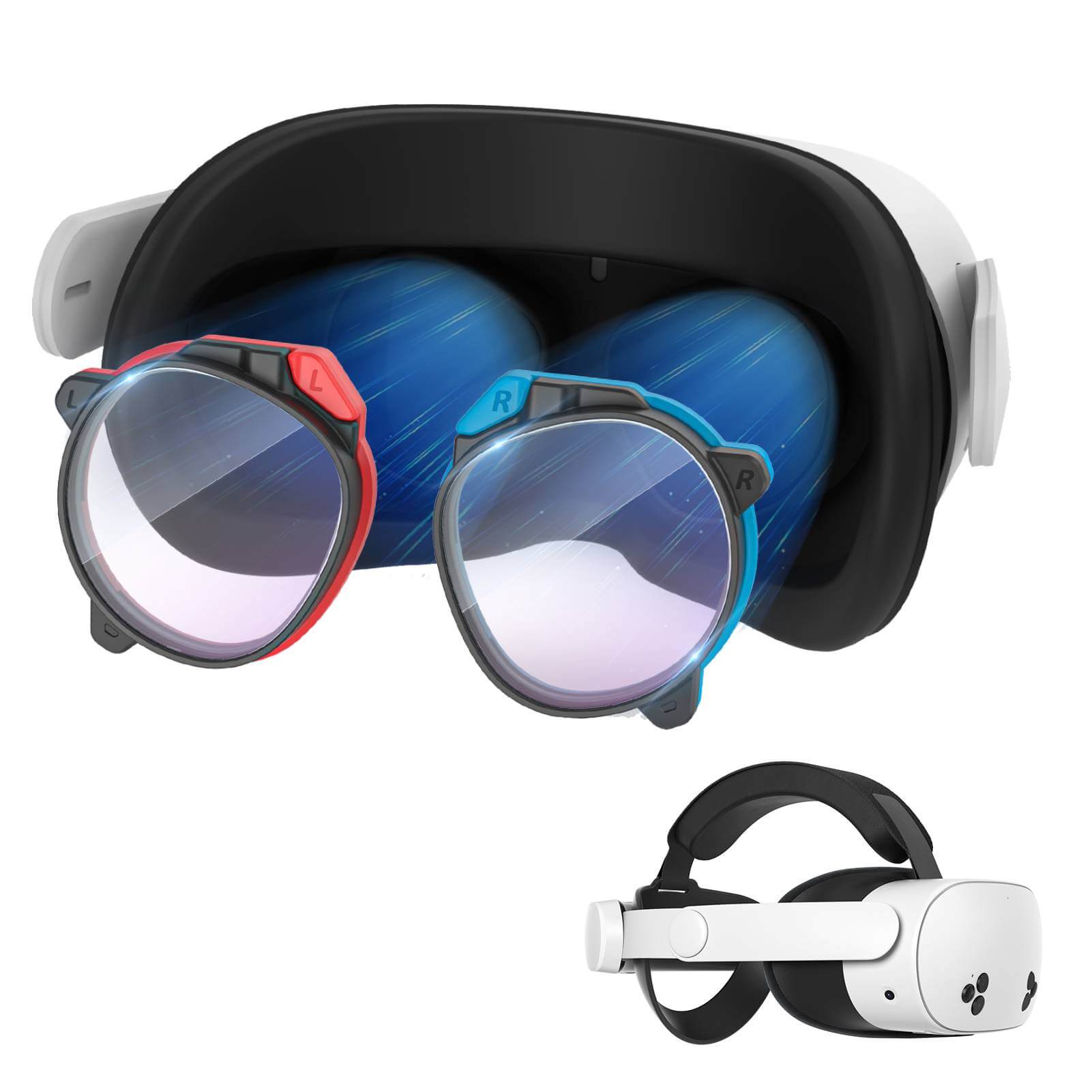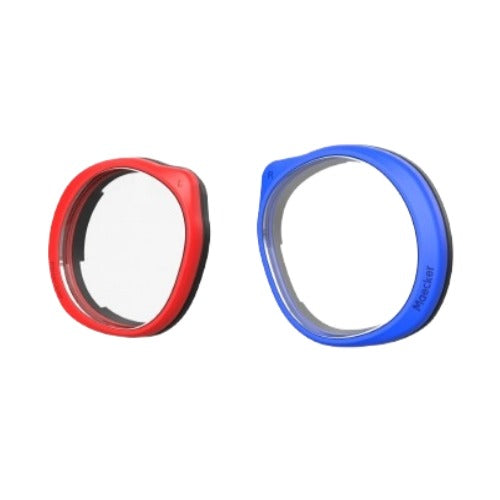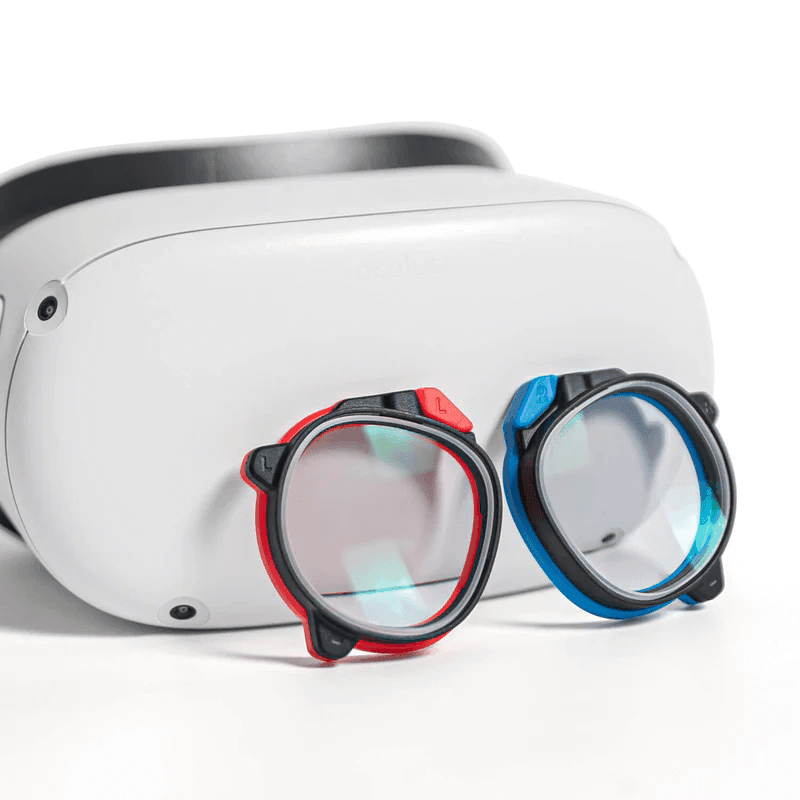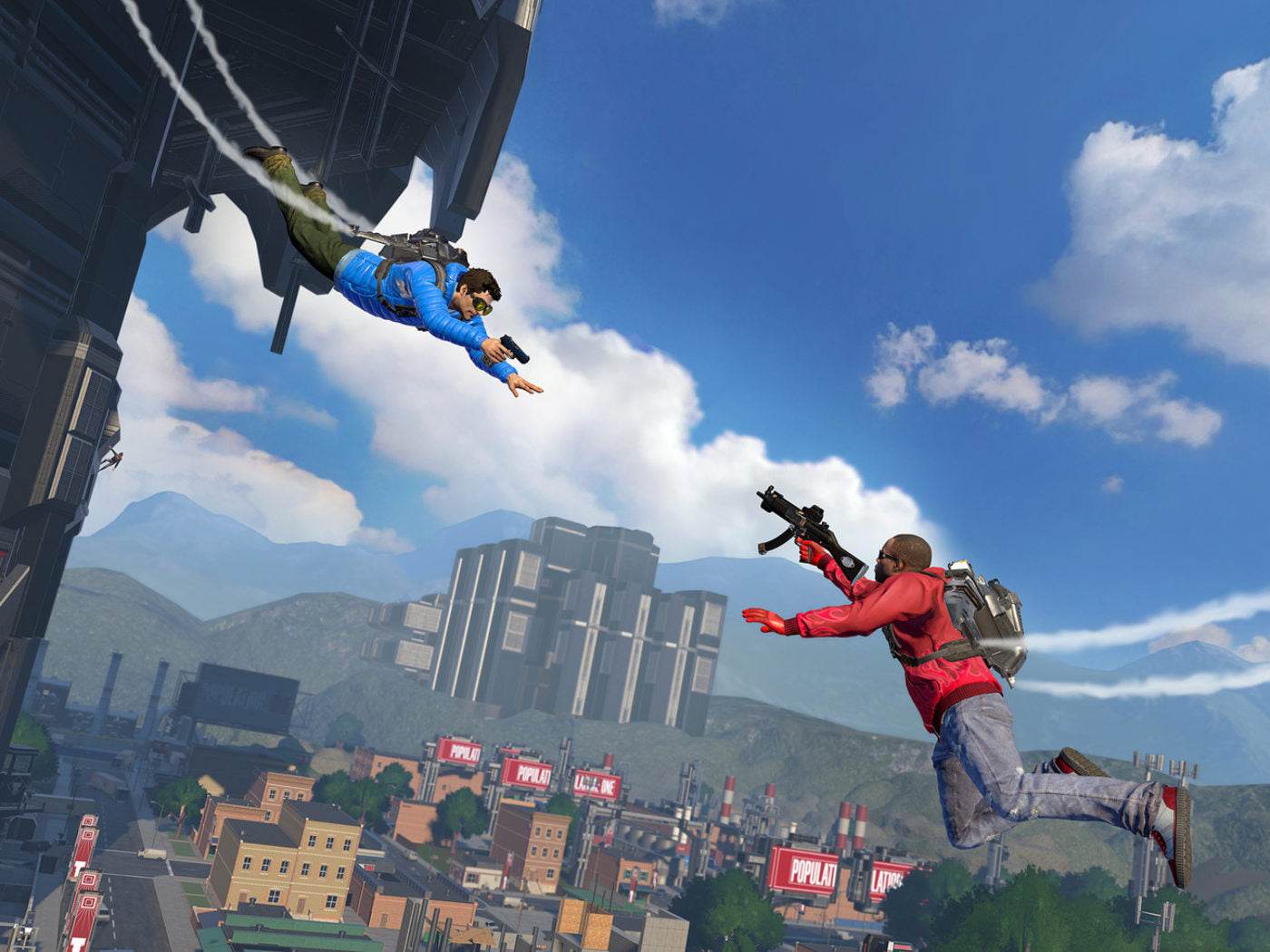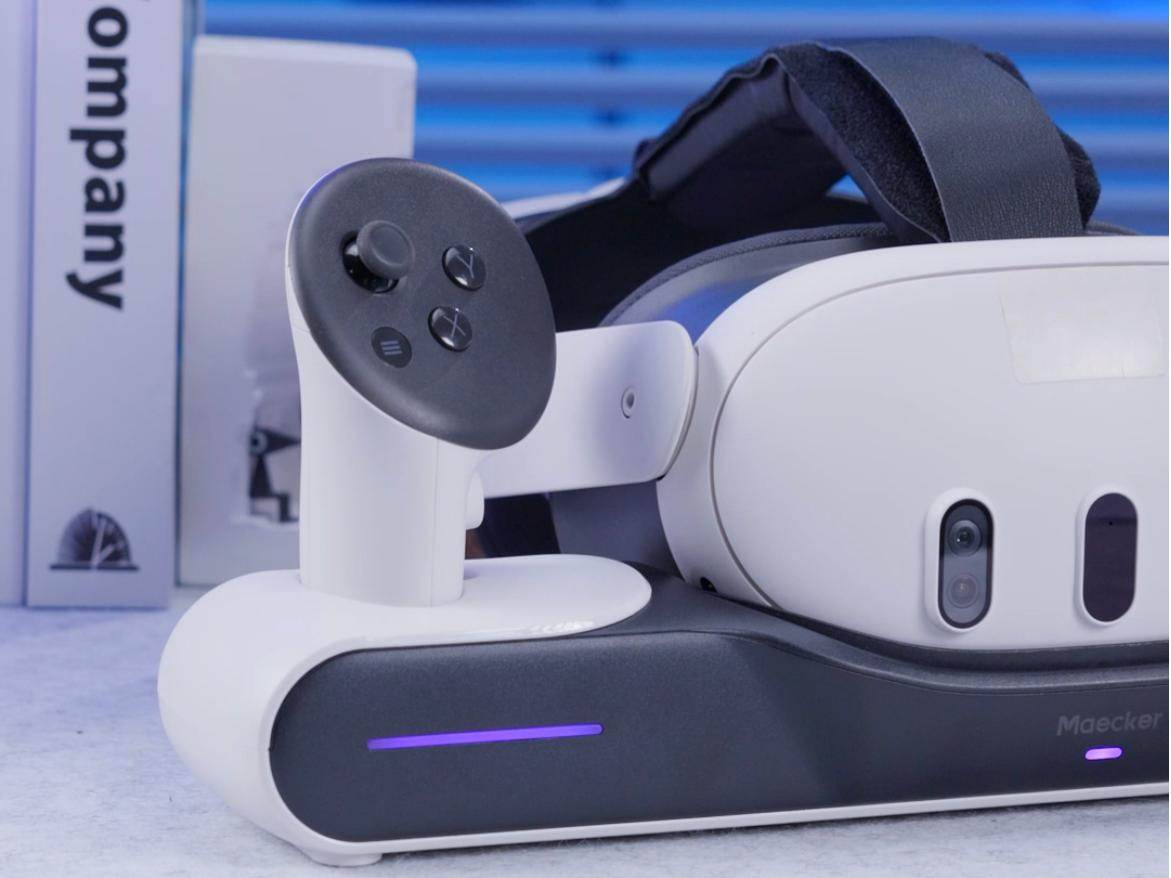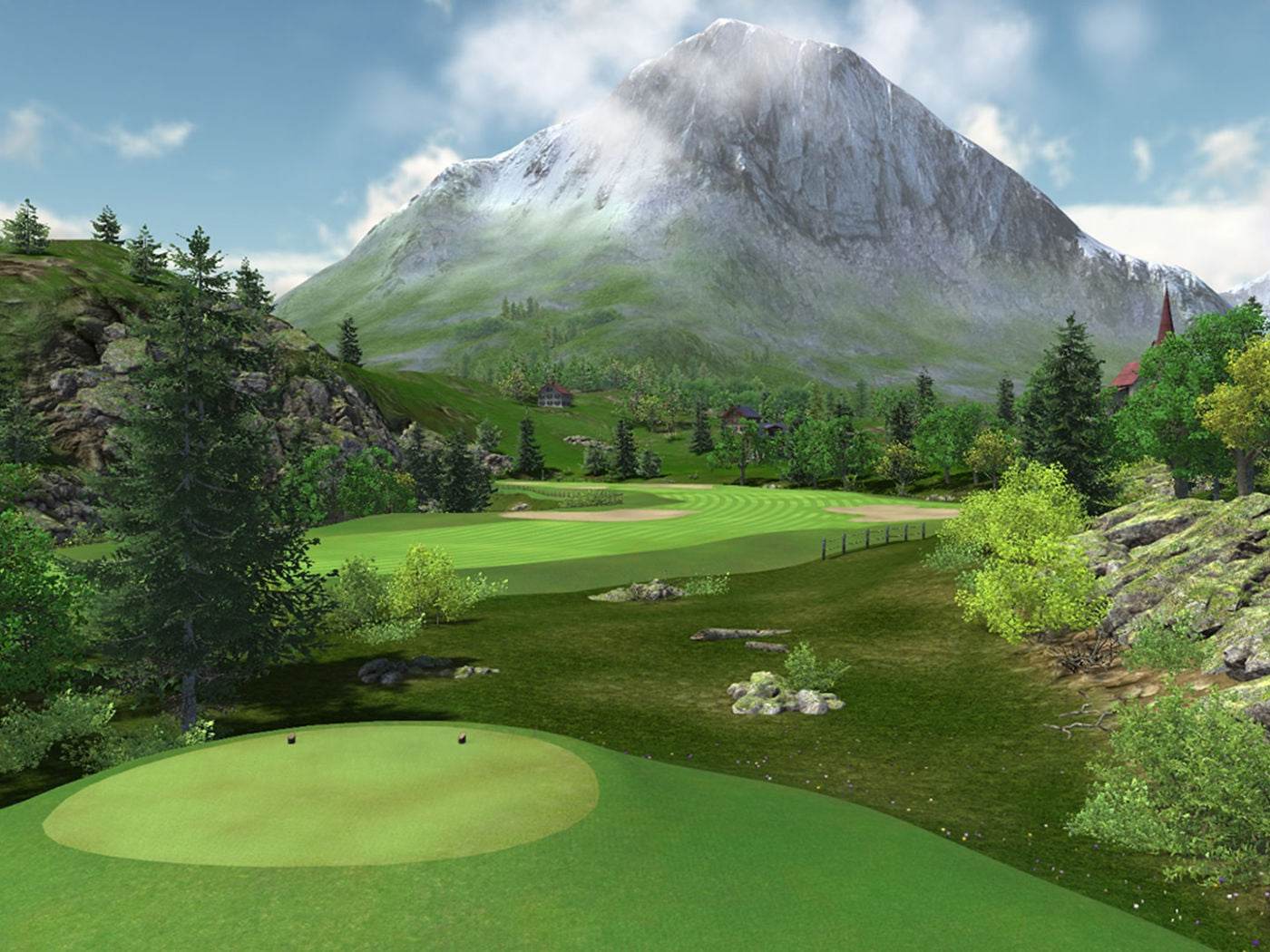Meta Quest 3 te ofrece una forma sencilla de grabar lo que ves en tus gafas para que puedas capturar tus experiencias de RV y compartirlas con otros. Esta guía te explicará todos los pasos para iniciar y detener la grabación de vídeo directamente desde tus gafas, te explicará cómo personalizar la configuración de grabación y te mostrará las opciones avanzadas de grabación disponibles en Meta Quest Developer Hub para PC.
Cómo iniciar y detener la grabación en Meta Quest
Grabar en Meta Quest 3 es sencillo y tienes varias formas de comenzar a capturar el juego.
Grabación a través del menú universal
- Presiona el botón Meta en el controlador táctil derecho. Esto abrirá el menú universal donde podrás acceder a diversas configuraciones y funciones.
- Seleccione el icono de la cámara en el menú y seleccione "Grabar video". Al comenzar a grabar, aparecerá un punto rojo en la vista, indicando que la grabación ha comenzado.
- Para finalizar la grabación, vuelve a pulsar el botón Meta para acceder al menú universal, selecciona el icono de la cámara y elige "Detener grabación". El vídeo se guardará automáticamente en la aplicación Archivos de tus gafas.
Grabación directa durante un juego

- Mientras estés dentro de un juego, presiona el botón Meta en tu controlador derecho para que aparezca el menú.
- Haz clic en el botón redondo de la cámara "Grabar video" para empezar a grabar la partida. Puedes activar el micrófono si quieres grabar tu voz durante la sesión.
- Para finalizar la grabación, repita los pasos para abrir el menú y seleccione "Detener grabación".
Los videos guardados en la aplicación Archivos están disponibles para acceder fácilmente en cualquier momento.
Antes de empezar a grabar, conviene ajustar algunos ajustes de la cámara para mejorar la calidad del vídeo. A continuación, te explicamos cómo acceder a estos ajustes y modificarlos:
- Desde el menú universal, seleccione el ícono del reloj en el lado izquierdo para acceder a la Configuración rápida.
- Toca la opción “Configuración” en la parte superior derecha, selecciona “Sistema” y luego elige “Cámara”.
- Puedes configurar preferencias como la relación de aspecto, la estabilización de imagen, el ojo principal (izquierdo o derecho), la velocidad de fotogramas y la tasa de bits (desde 5 Mbps hasta 20 Mbps). Estas opciones te permiten controlar la calidad de tus grabaciones para obtener vídeos más fluidos y nítidos.
Para quienes prefieren configuraciones específicas, ajustar la velocidad de fotogramas y la resolución garantiza que el metraje cumpla con sus expectativas. Cuanto mayor sea la configuración, mejor será la calidad, pero tenga en cuenta que esto aumentará el tamaño del archivo.
Cómo grabar realidad mixta en Meta Quest

La Realidad Mixta permite grabar experiencias que combinan elementos del mundo real con interacciones de RV. Meta Quest 3 facilita la captura de partidas en Realidad Mixta. Aquí tienes algunos consejos para ayudarte con la grabación en Realidad Mixta:
Configura tu espacio de juego
Asegúrate de que tu zona de juego esté bien iluminada y despejada. Esto mejora la calidad de la cámara, facilitando que los auriculares reconozcan objetos y sigan el entorno con precisión.
Personalizar la configuración del guardián
Al configurar el Guardián, hágalo un poco más grande que la habitación para evitar las notificaciones de límites durante la grabación de RM. Si tiene activado el modo de desarrollador, también puede desactivar el límite del Guardián para una experiencia más fluida, aunque esto puede provocar secciones negras en las grabaciones de paso.
Siga los pasos de grabación estándar
Para grabar imágenes de RM, siga los mismos pasos que para la grabación normal. Estos ajustes integrarán automáticamente las imágenes de paso para una grabación más inmersiva.
Cómo usar Meta Quest Developer Hub para opciones de grabación avanzadas
Para usuarios que buscan obtener la mejor calidad en VR, Meta Quest Developer Hub (MQDH) para PC ofrece opciones avanzadas que van más allá de las disponibles directamente en el visor. Con MQDH, puedes ajustar parámetros como la resolución, la tasa de bits y la velocidad de fotogramas. Aquí te explicamos cómo empezar:
Configuración del modo de desarrollador
- Visita meta.com y registra tu cuenta con una organización. Acepta el acuerdo de desarrollador para continuar.
- Abre la aplicación móvil Meta Quest, ve a Menú > Dispositivos > Ajustes de auriculares y activa el Modo de desarrollador . Reinicia los auriculares para que los cambios surtan efecto.
Cómo conectar tu Quest a una PC
- Conecta tus auriculares Quest a tu PC con un cable USB-C o Link. Cuando se te solicite, activa la depuración USB.
- Con los auriculares conectados, abra MQDH y vaya al Administrador de dispositivos . Desde aquí, podrá ajustar la configuración de grabación.
Configuración de grabación avanzada en MQDH
- Seleccione la resolución deseada (1080p o 4K) y la tasa de bits. Una configuración más alta proporciona una mejor calidad de video, pero también genera archivos más grandes.
- Personaliza la velocidad de fotogramas para grabaciones más fluidas y configura los ajustes de audio. Beta Cast 2.0 ofrece un rendimiento de grabación aún mejor con opciones adicionales como la relación de aspecto y el control ocular principal.
- Tras la conexión USB inicial, active "ADB por WiFi" para grabar de forma inalámbrica. Asegúrese de que su PC y los auriculares estén en la misma red y desconecte el cable USB para mayor flexibilidad.
Cómo transferir material grabado de Meta Quest 3
Una vez finalizada la grabación, querrás transferirla desde tus auriculares a otros dispositivos. Aquí tienes dos métodos sencillos:
Transferencia a una PC
- Usa un cable USB para conectar los auriculares a tu PC. Acepta la conexión cuando se te solicite.
- En su PC, abra la carpeta Oculus Quest, luego navegue a la carpeta “VideoShots” para grabaciones en los auriculares o la carpeta “Videos” para grabaciones MQDH.
- Arrastre y suelte los archivos de vídeo a su ubicación preferida en la PC.
Transferencia a un dispositivo móvil
- En la galería multimedia de tus auriculares, haz clic en los tres puntos de un video y luego selecciona “Sincronizar” para que el video esté disponible en tu teléfono.
- Abre la aplicación móvil Meta Quest, ve a Menú > Galería , selecciona tu video y descárgalo a tu teléfono.
Accesorios recomendados para Meta Quest:
1. Correa para la cabeza con batería para MaeckerVR Meta Quest 3
Conclusión
Meta Quest 3 ofrece un conjunto versátil de herramientas para grabar partidas de RV y capturar imágenes de realidad mixta. Los usuarios pueden elegir entre las opciones de grabación en el visor para capturas rápidas o MQDH en PC para una mayor calidad y personalización. Con esta guía, podrás gestionar todo, desde la grabación básica de partidas hasta la transferencia de vídeo de alta calidad, para que puedas compartir tus experiencias de RV en cualquier momento.

